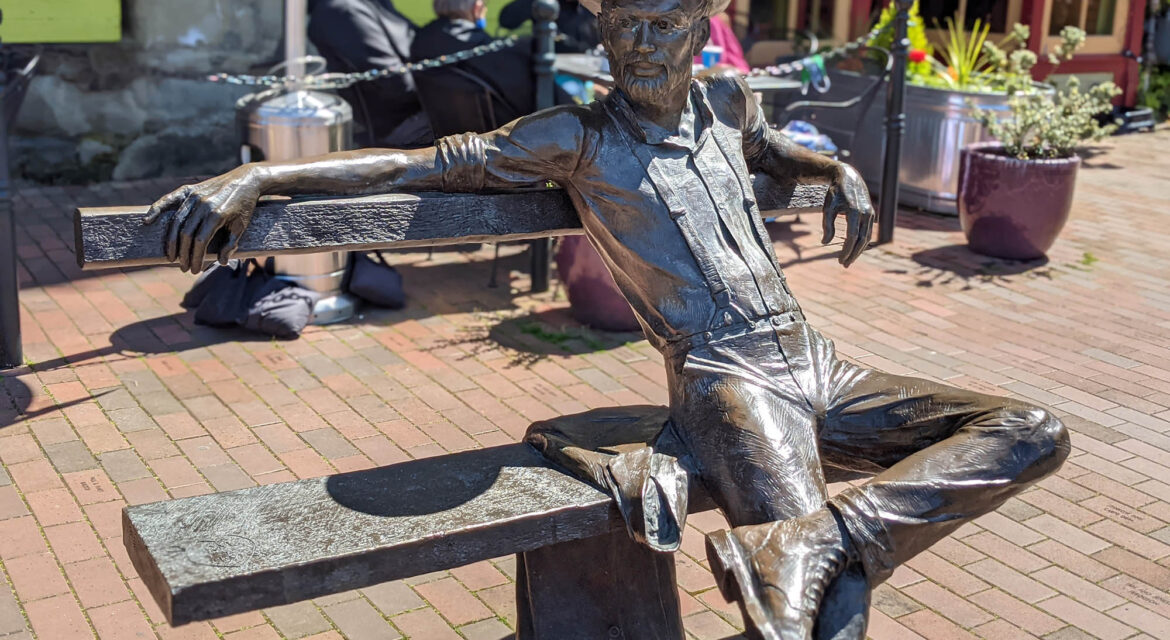 While neighborhoods and entire cities have been able to develop icons and monuments that make them distinct, cultivating an identity that resonates to both residents and visitors isn’t just about the presence of these kinds of recognizable elements. While the Fairhaven district in Bellingham, Washington has a few of these distinctive icons and monuments, what makes the area so memorable is how these elements are connected to the past and present of the city. This connection has created a distinct identity for Fairhaven that has had a notable impact on the culture and economy of the entire region.
While neighborhoods and entire cities have been able to develop icons and monuments that make them distinct, cultivating an identity that resonates to both residents and visitors isn’t just about the presence of these kinds of recognizable elements. While the Fairhaven district in Bellingham, Washington has a few of these distinctive icons and monuments, what makes the area so memorable is how these elements are connected to the past and present of the city. This connection has created a distinct identity for Fairhaven that has had a notable impact on the culture and economy of the entire region.

Celebrating the Legacy of “Dirty Dan” Daniel Jefferson
Daniel Jefferson Harris, also known as “Dirty Dan”, is known as the founder of Fairhaven. Born around 1832, he arrived in Bellingham Bay around 1853 to begin work on a log cabin and land claim. He acquired additional properties over the year to the point that he was the person who named the area “Fairhaven” from an Indian name, see-see-lich-em, meaning safe port or fair haven. In 1888, Harris sold most of his property in Fairhaven and moved to California when he died in 1890.
 Very little of this history is showcased at the statue of “Dirty Dan” that has become iconic across the area, although the history of the city itself, as well as the legacy of “Dirty Dan”, are celebrated in numerous ways. Plaques and signs highlight the history associated with a specific building, ranging from markers that call out the location of the town’s marshal’s office to bronze plaques of Fairhaven Hotel and Gamwell House. Additionally, the bench statue of “Dirty Dan” spurred the creation of other monuments that depict local builder J.J. Donovan and Mark Twain.
Very little of this history is showcased at the statue of “Dirty Dan” that has become iconic across the area, although the history of the city itself, as well as the legacy of “Dirty Dan”, are celebrated in numerous ways. Plaques and signs highlight the history associated with a specific building, ranging from markers that call out the location of the town’s marshal’s office to bronze plaques of Fairhaven Hotel and Gamwell House. Additionally, the bench statue of “Dirty Dan” spurred the creation of other monuments that depict local builder J.J. Donovan and Mark Twain.
This spirit and connection to the past further developed over the decades and helped enable Fairhaven to become a designated historic district on the National Register of Historic Places in 1977. However, it was the 2003 development of Fairhaven Village Green that really showcased how this identity has been able to positively impact the city in the present. The impact of doing so has gone far beyond any single project or initiative though.

Stimulating the Culture and Economy of Fairhaven
 Fairhaven Village Green hosts numerous events throughout the year and is also available for reservation. It contains benches, a drinking fountain, a massive lawn and an outdoor movie screen. Various donor names have been carved into the bricks that surround the stage near the statue of “Dirty Dan,” highlighting an important means of revenue for the project.
Fairhaven Village Green hosts numerous events throughout the year and is also available for reservation. It contains benches, a drinking fountain, a massive lawn and an outdoor movie screen. Various donor names have been carved into the bricks that surround the stage near the statue of “Dirty Dan,” highlighting an important means of revenue for the project.
This statue has also spurred the creation of more abstract pieces of public art such as “Earth Guardian” outside the Fairhaven Library, and “Spiritscape #10,” which is located at Fairhaven Park. Additionally, the statue is a hub for activities like the Dirty Dan Murder Mystery Weekend. The statue and other icons of the area are also featured prominently in maps and guides to Bellingham and the entire Pacific Northwest region.
The influence of the legacy of the area goes beyond the statue though. It has helped define the identity of Fairhaven itself, which is illustrated with the bowler hat icon that various businesses utilize in creative ways. This icon has been incorporated in logos, given out as part of trophies and much more.
All of these elements are part of various pieces of merchandise for sale throughout the city, providing a direct economic impact to countless organizations. This simultaneous connection to the past and present has allowed Fairhaven to define an identity that will not only continue to positively impact the community in the present but also resonate far into the future.

Cultivating an Identity
 While the identity of Fairhaven is connected to the legacy of “Dirty Dan,” it has also grown into something much bigger. Businesses and organizations use the “Fairhaven” name in various ways while other monuments and icons in the area, directly and indirectly, build on this legacy. Doing so has allowed Fairhaven to cultivate an identity that will continue to evolve for the benefit of everyone.
While the identity of Fairhaven is connected to the legacy of “Dirty Dan,” it has also grown into something much bigger. Businesses and organizations use the “Fairhaven” name in various ways while other monuments and icons in the area, directly and indirectly, build on this legacy. Doing so has allowed Fairhaven to cultivate an identity that will continue to evolve for the benefit of everyone.

